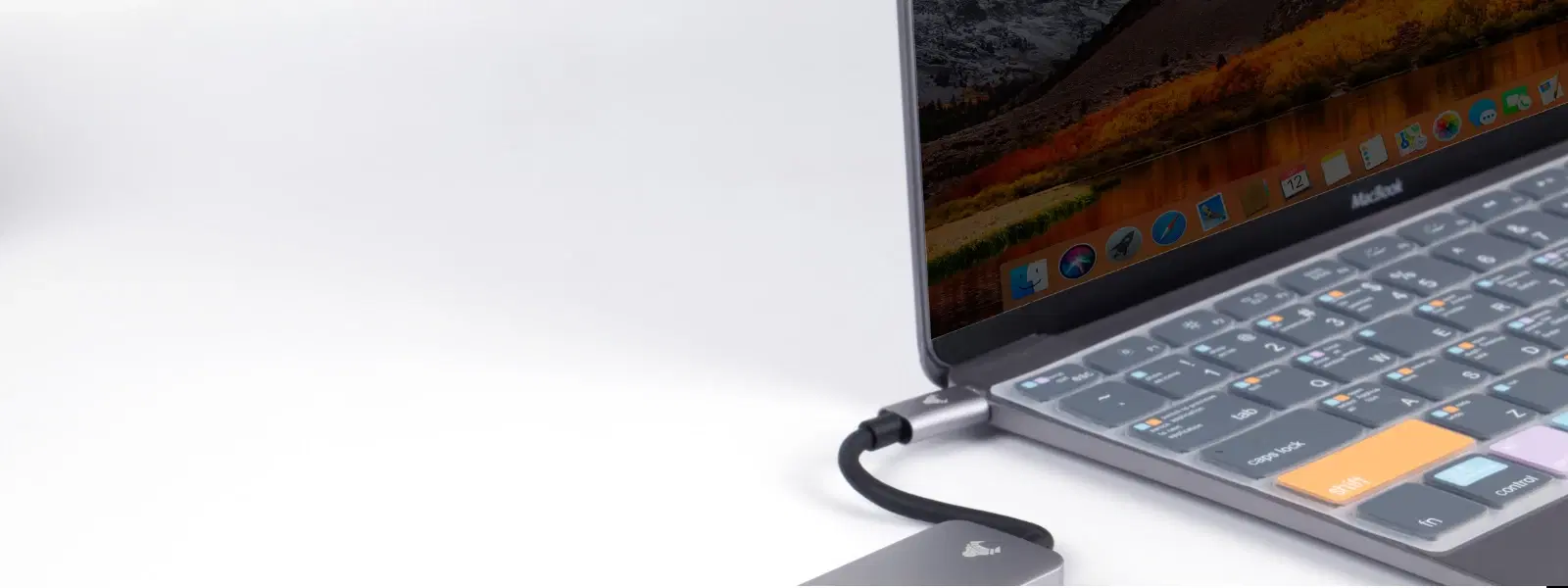
Consumer Electronics
•04 min read
Imagine being able to resolve issues on your MacBook or reinstall macOS without being restricted by your internal drive. Booting your MacBook from a USB drive can simplify troubleshooting, upgrading, or even testing alternative operating systems. This guide will walk you through every step, from creating a bootable USB and configuring startup options, to troubleshooting common issues so that you can unlock your device's true potential.
Booting your MacBook using an external device means loading the operating system from a USB drive rather than the internal disk. This process is ideal when you need to reinstall macOS, troubleshoot system issues, or simply explore a different operating environment.
There are many scenarios where booting from USB proves essential. Whether you're completing a system recovery, upgrading to a newer version of macOS, or testing beta software, the capability to boot from a USB drive provides a versatile solution. It is important to check compatibility for your specific MacBook model, as requirements can vary slightly.
Begin by confirming your MacBook supports booting from external media. Verify that the macOS version you plan to install is compatible with your device for a seamless process.
If your Mac features Apple silicon, you may need to adjust security settings using macOS Recovery. Ensure that external booting is permitted. For Intel-based models, reviewing security settings can also help avoid issues during setup.
Formatting your USB drive correctly is crucial. For best results, consider using formats such as FAT32, exFAT, or APFS as appropriate. macOS provides built-in tools that make the formatting process straightforward and user-friendly.
To create a bootable USB, start by locating and downloading the full macOS installer directly from Apple. Ensure you select the version that best fits your MacBook model and requirements.
The Terminal is a powerful tool for transforming your USB drive into a bootable device. Following a simple sequence of commands can help you complete the process with ease. Taking your time to verify each command can help avoid common errors.
Once you have created your bootable device, it is important to test it thoroughly. This step ensures that the necessary files are intact and that your MacBook will recognise the USB drive during startup.
To access the boot menu, the process slightly differs based on your device type. For Intel-based Macs, restart and hold the Option key immediately. For Macs with Apple silicon, hold the Power button until the startup options appear. These key combinations will allow you to see all available startup disks.
Once you have accessed the startup options, simply select the bootable USB drive. The process should start promptly, allowing you to proceed with installations, system repairs or trial runs with other operating systems.
If your MacBook does not recognise the USB drive or you encounter errors, common reasons might include incorrect formatting or missing bootable files. Double-check your setup, verify the disk format, and, if necessary, adjust the security settings in macOS Recovery to clear any blocks that may prevent booting from external media.
Insight Corner: "Did You Know?"
Macs with Apple silicon require you to adjust specific security settings to allow booting from external media. Using macOS Recovery, you can modify the Startup Security Utility to permit this function. This ensures your Mac remains secure while offering advanced versatility.
For those who frequently use a bootable USB, it might be helpful to set the USB drive as the default startup disk. This can often be managed through System Preferences. However, if you decide to change this setting, be sure to keep your regular internal drive ready as a backup option.
The ability to boot from USB is not limited solely to macOS. With the proper setup, you can also launch alternative operating systems such as Linux or Windows. Although these systems offer unique benefits, be mindful of limitations, particularly with drivers and software compatibility on MacBook hardware.
In today’s tech-savvy world, embracing flexible shopping platforms like Tata Neu not only simplifies transactions but also rewards you with NeuCoins on every purchase. Whether you are updating your tech gear or finding the latest in consumer electronics, integrating beneficial rewards into your journey keeps your experience smooth and value-driven. Every time you engage with Tata Neu, you earn NeuCoins, making your purchases even more rewarding and stress-free.
Press and hold the Option key during startup, then select the USB drive from the list of available startup disks.
On Intel-based Macs, simply restart and hold the Option key during startup. For Macs with Apple silicon, press the Power button until the startup options appear.
Ensure your USB drive is correctly formatted and that it contains a bootable installer. Once this is done, access the startup options and manually choose your USB drive.
Issues typically stem from incorrect USB formatting, missing bootable files, or restrictive security settings. Verify your settings in macOS Recovery or reformat your drive if needed.
Booting your MacBook from a USB drive is not only a practical skill, but also an empowering tool in troubleshooting and upgrading your device. By understanding the process, preparing appropriately, and knowing how to overcome obstacles, you ensure that your MacBook remains optimized and ready for any challenge. Explore more methods to enhance your tech experience and earn rewarding NeuCoins with Tata Neu’s seamless platform. Enjoy smart shopping with confidence and simplicity as you continue to explore the potential of your digital life.